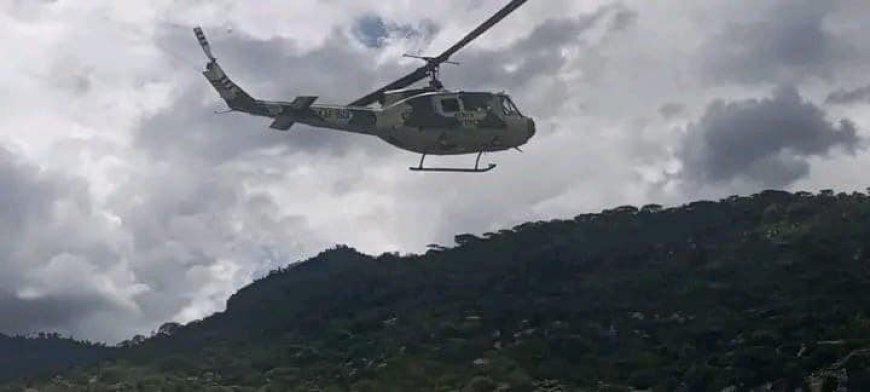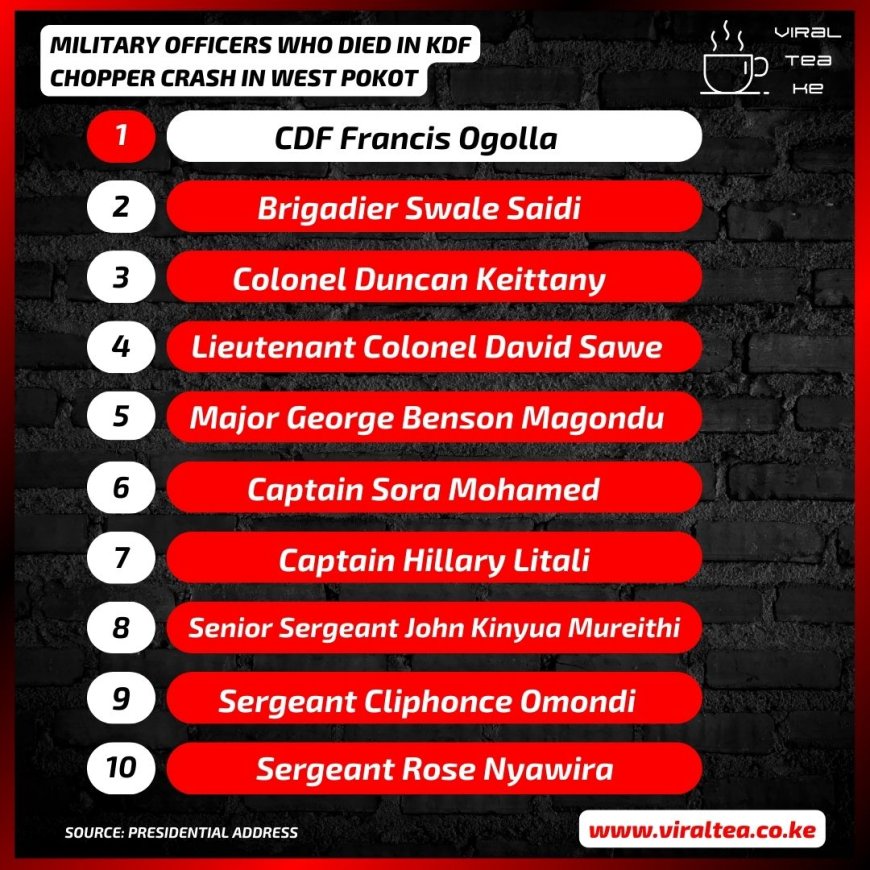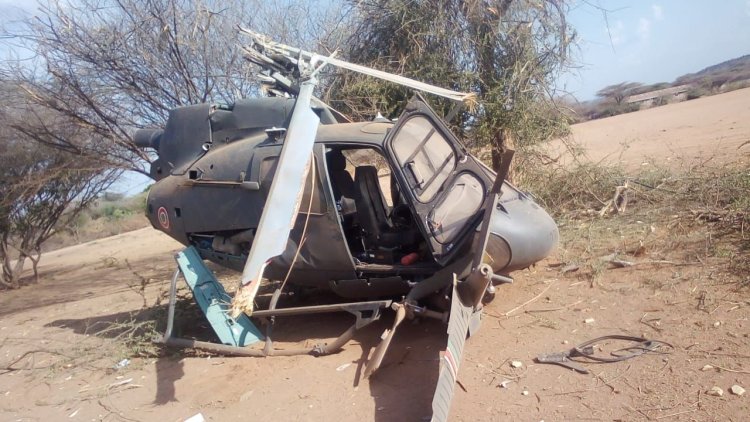What Will Happen: Kenya Air Force To Probe Chopper Crash That Killed CDF Ogolla
The tragic air accident occurred in the Sindar area, Kaben location, Tot division, in Elgeyo Marakwet County, about 400 kilometres northwest of the capital Nairobi.

President William Ruto on Thursday, April 18 announced that the Kenya Air Force dispatched a team to investigate the chopper crash in Elgeyo Marakwet County that claimed the life of Chief of Defence Forces (CDF), General Francis Ogolla and nine others.
Speaking at State House during a live address to the nation, the Head of State revealed that the team will seek to establish the cause of the crash which he reported occurred as early as 2.20 pm.
"The Kenya Air Force has constituted and dispatched an air investigations team, to establish the cause of the air crash," he announced.
The tragic air accident occurred in the Sindar area, Kaben location, Tot division, in Elgeyo Marakwet County, about 400 kilometres northwest of the capital Nairobi.

List of 10 military officials who died in the April 18, 2024 chopper crash. /VIRAL TEA KE
Military officials who died alongside General Ogolla include Brigadier Swale Saidi, Colonel Duncan Keittany, Lieutenant Colonel David Sawe, Major George Benson Magondu and Captain Sora Mohamed.
Others were Captain Hillary Litali, Senior Sergeant John Kinyua Mureithi, Sergeant Cliphonce Omondi, and Sergeant Rose Nyawira.
What Will Happen
Normally, air accidents are a consequence of a complicated sequence of events. Helicopter crash investigations are complex undertakings aimed at determining the cause of the accident and preventing similar occurrences in the future.
Here's a breakdown of the typical process, and what to expect as the Kenya Air Force team carries out the probe:
Securing the Crash Site
The first priority is to ensure the safety of emergency personnel and prevent further damage to evidence. This involves securing the scene, controlling hazards like fire or fuel spills, and establishing a perimeter.
Data Collection
Investigators meticulously gather evidence from various sources. They include sub-processes such as:
- Wreckage Examination: The wreckage is thoroughly examined to understand the impact sequence and identify any pre-crash malfunctions.
- Flight Data Recorders (FDR) and Cockpit Voice Recorders (CVR): These recorders (similar to aeroplane black boxes) provide valuable data on flight parameters, pilot communication, and ambient sounds, helping reconstruct the events leading to the crash.
- Weather Information: Meteorological data is obtained to understand weather conditions that might have played a role.
- Maintenance Records: A review of maintenance records helps identify any potential mechanical issues.
- Witness Interviews: Anyone who saw the accident or has relevant information is interviewed.
Analysis
The collected evidence is meticulously analyzed. This can be done by:
- Wreckage examination revealing damage patterns and potential equipment failures.
- FDR/CVR data decoded to understand the flight path, engine performance, and pilot actions.
- Weather data assessed for its impact on the flight.
- Maintenance records scrutinized for any unaddressed issues.
- Witness statements corroborated with other evidence.
Cause Determination
Based on the analysis, investigators determine the most likely cause(s) of the accident. This could be mechanical failure, pilot error, weather conditions, or a combination of factors.
Reporting and Recommendations
A detailed report is compiled outlining the cause of the crash, contributing factors, and safety recommendations to prevent similar accidents in the future.
These recommendations may target improvements in aircraft design, pilot training, maintenance procedures, or air traffic control protocols.
Chain Of KDF Aircraft & Chopper Crashes
The latest crash involving a military aircraft chopper adds to the series of crashes that have raised concerns regarding the safety of military hardware.
This is a trend that stemmed from the government's decision to transfer the management of civilian-owned aircraft to the military in December 2020, leading to the establishment of the National Air Support Department (NASD) at Wilson Airport in Nairobi.
- On November 20, 2023, tragedy struck when KAF 1101, a Mi 171e helicopter delivered in 2011, crashed in Buna, Garissa during patrols for Operation Amani Boni.
- Another incident occurred on November 9, 2023, involving an AS 550 C3 Fennec delivered in 2018, designated for attack purposes, crashing in Ol Tepesi, Kajiado.
- Another accident involved a refurbished Bell UH-1M Huey 2 delivered in 2017, that crashed in Lamu county, and an AS 550 C3 Fennec delivered in 2018, which crashed in Chemolingot, West Pokot, on July 20, 2023, while accompanying Defence Cabinet Secretary Aden Duale.
Coincidentally, the April 18 crash also involved a Huey. The Bell UH-1B helicopter, nicknamed the "Huey," was developed in the 1950s and widely used by the United States (US) military during the Vietnam War.
The frequency of these incidents, especially considering the significant number involving a single operator (KDF) within a short span, has raised concerns within the aviation industry.

Kenya Air Force chopper that crashed after take off at Chemlingot Stadium on Thursday, July 20, 2023. /KENYA DEFENCE FORCES
However, some officials knowledgeable about military operations attribute the incidents to serviceability concerns and pilot fatigue, with a top official in the Defence Ministry telling The Standard that the Kenya Kwanza administration's frequent Cabinet meetings and top officials' desire to travel to various locations could be reasons for military pilots flying longer hours.
Despite the military aircraft crashes, the Kenya Air Force has not released accident investigation reports, raising questions about transparency and accountability.
According to the Aviation Safety Network, the Kenya Air Force has lost 12 aircraft since 2012, while the National Police Air Wing has lost 5, underscoring the need for a thorough review of the airworthiness of Kenya's state-owned aircraft.






